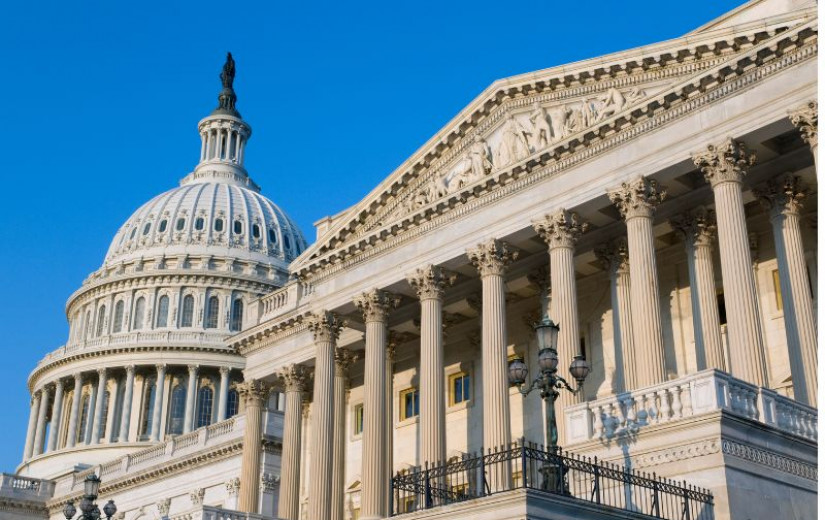
As the new US administration takes its place in the White House, poised to shape the future of geopolitics and commerce, brand leaders are confronting a stark reality: trust continues to fray. Polarization, misinformation, and a sense of betrayal permeate public discourse. Institutions once seen as pillars of stability are now viewed with suspicion.
It’s easy to dismiss the outrage as noise, but what if it’s something more? What if outrage isn’t the enemy but a signal—a mirror reflecting the fractures in trust and purpose we’ve overlooked?
When viewed this way, outrage becomes more than a reaction to missteps. It reveals where alignment has broken, offering a chance to recalibrate and reconnect. For brand leaders, I see this as a moment to champion intention, curiosity, and courage. Those willing to lean into this challenge have an opportunity to transform outrage into a catalyst for meaningful social influence and change. Perhaps most importantly, the choices we each make today will shape the future.
This article is part of Branding Strategy Insider’s newsletter. You can sign up here to get thought pieces like this sent to your inbox.
Understanding The Landscape: A Crisis In Numbers
Across industries, latching onto the latest social trend with virtue signaling and misalignment between communications and behaviors has come at a time when people are frustrated and no longer giving brands the benefit of the doubt—instead they are asking for consistency, accountability and most importantly resonance alongside relevance. Given the relentless feed of news and information and the pressure to engage in real-time, every message a brand puts out today carries the potential to become a crisis…. It’s impossible to predict who will receive a seemingly innocuous message in the wrong way on the wrong day. And the interconnectedness of challenges—social trends, consumer expectations, and ideological divides—adds even greater complexity.
Revealing a profound trust deficit, research statistics offer insight into the landscape, underscoring the disconnect between corporate actions and stakeholder expectations:
- Only 37% of people globally trust business leaders to act in society’s best interest, a decline of 12% in just one year (Edelman Trust Barometer 2024).
- 72% of Americans believe businesses should stay out of politics unless it directly affects their operations and only 41% of US adults believe businesses should take a public stance on current events (Morning Consult 2024/Gallup and Bentley University poll)
- 61% of consumers are skeptical of corporate sustainability claims and 59% of Americans suspect brands of leveraging social issues for profit (PwC 2024 and Axios- Harris Poll).
- 72% of Americans feel healthcare systems prioritize profit over care (Morning Consult 2024)
These numbers narrate a story of disillusionment. Rising costs, unfulfilled promises, and tokenistic gestures deepen public skepticism. In healthcare, the stakes are particularly stark: inaccessible services and soaring expenses amplify feelings of betrayal. —a sentiment epitomized by the shocking assassination of a major healthcare CEO. Outrage stems from this context, a byproduct of disconnection and unmet expectations. Meanwhile, 91% of CEOs acknowledge the need to recalibrate ESG programs, yet recalibration without systemic change risks eroding trust further and fueling discontent.
Ultimately, brand leaders are being called on to decide what their brands stand for at the highest levels, not to latch on to trends. Yet, how do they do this in a way that addresses existing fractures, realigns purpose, and rebuilds trust?
Lessons From History: Cycles Of Outrage And Leadership
History often is cyclical. And outrage is not new. In many ways, what we are seeing today is somewhat reflective of the time after the Great Recession. Movements like Occupy Wall Street and the Tea Party arose from deep disillusionment with institutions. These moments weren’t just reactions—they were signals of broader public demand for change, which accelerated the early purpose movement. As people were being told the economy had recovered and yet weren’t experiencing this in their own lives, businesses stepped into a leadership void.
PepsiCo was one of the earliest brands to embrace purpose, even before the Great Recession in 2006, when Indra Nooyi introduced Performance with Purpose. Paul Polman embedded sustainability into Unilever’s in 2010, after publicly criticizing the stock market’s focus on short-term returns. These efforts accelerated the fledgling purpose movement, demonstrating how businesses could lead by example. Actions like BlackRock’s emphasis on sustainable investing in 2013 and Brand Z’s incorporation of purpose-driven metrics in 2014 signaled the growing demand for businesses to align their strategies with societal needs.
Today, the stakes feel even higher than they did then. Indeed, driven in large part by polarized politics, brands now face increasing backlash. And tellingly, the outrage transcends ideological divides: progressive audiences critique greenwashing and performative actions, while conservative groups resist DEI and sustainability efforts. Yet, systemic shifts take time. The trajectory of today’s anger and frustration—and how it will intersect with the priorities of a new administration—remains uncertain. Brands that view this as a moment to pause, stay aligned with their values, and act consistently can position themselves as trusted leaders in this evolving landscape.
Decoding Outrage: The Signals And Their Meaning
Deconstructing the meaning of today’s outrage requires nuance. Four key drivers help to clarify the complexities:
- Rage Reflects Systemic Failures: Rage often stems from the perception that brands prioritize profits over people. This sentiment is particularly acute in industries like healthcare, where rising costs and inaccessible services magnify feelings of betrayal.
- Resistance Reveals Superficiality: Superficial gestures—vague sustainability claims or tokenistic DEI efforts—amplify skepticism. Resistance arises when audiences feel co-opted rather than respected.
- Reckoning Exposes Misalignment: A reckoning occurs when brands overstep societal boundaries without ensuring coherence between their values and actions. For example, sustainability claims that clash with exploitative supply chain practices erode trust.
- Rejection Reflects Fear: Fear, often rooted in uncertainty or perceived loss, manifests as rejection. Brands navigating cultural shifts must tread carefully to address anxieties without compromising their values.
These drivers interact to form cycles of distrust. To break them, brand leaders must act with coherence, courage, and intentionality—embedding trust-building practices across all facets of a brand’s operations.
Seven Principles For Rebuilding Trust And Purpose
Adopting an intentional, systemic approach is the best way to rebuild trust and transform outrage into an opportunity. In my work with clients, I have found seven principles help to navigate today’s complex environment. That said, it’s equally important to recognize that there are no guarantees…. I find consistency, alignment, preparedness and courage to be the best mantras.
1. Marketers are fiduciaries
A marketer’s first role is to be a steward of their brands. Their responsibility is to ensure that every action they take is anchored in purpose and a brand’s core operating principles, not to amplify personal beliefs and values.
Acting as a fiduciary requires balancing societal responsibility with business outcomes, harmonizing the influence a brand has the power to wield over culture public discourse with the integrity of the brand’s promises.
2. Purpose is a living discipline
Purpose is more than a statement: it’s a compass—true to your business operations yet broad enough to encompasses a social mission. By necessity, purpose must unfold alongside people’s evolving needs and societal expectations. A brand like Natura, whose purpose is to nurture beauty and relationships for a better way of living and doing business, exemplifies this by respecting the biodiversity of the Amazon when sourcing ingredients, integrating sustainability into supply chains and addressing local community needs.
Purpose thrives when it’s treated as a discipline requiring intentionality at every level. When a brand leader tells you it’s time to move on from purpose, they’ve misunderstood it entirely—would you ever move on from strategic planning?
3. Purpose architecture mitigates risk
Purpose without structure and clarity risks becoming superficial. Guided by nuanced audience insights and materiality, purpose architecture offers a strategic framework to differentiate corporate and product brand roles—and further distinguishes operational commitments (sustainability and regulatory compliance) from messaging.
Begin developing purpose architecture by systems mapping potentially conflicting perspectives and expectations – spoken and unspoken – of customers, employees, investors and other stakeholders. And, importantly, consider segmenting by ideology to identify both messages that resonate and red flags to navigate and ensure you use scenario planning to be prepared for potential crises.
4. A values-driven POV builds confidence
Stakeholders seek alignment between a company’s values and its actions. So, it’s essential to identify where your brand has earned the right to lead and take confident, values-driven action. The question isn’t if you should speak up—it’s whether your audience grants you permission to add your voice to the conversation.
A clear POV is a lens for navigating this complexity, guiding consistency and clarity necessary to strengthen credibility and avoid virtue signaling. Airbnb’s program that offers housing to refugees is an earnest act of belonging that resonates with people’s deepest values. By turning its ethos into action, Airbnb transforms its mission into tangible hope, rebuilding trust and loyalty at a human level.
5. Diversity is competitive advantage
Diversity is a strategic asset, driving innovation and connection. A Washington Post/IPSOS poll (April 2024) found 61% of Americans support DEI practices, saying they are a “good thing.” And McKinsey data from 2023 shows companies with ethnically diverse leadership are 39% more likely to outperform peers. Signaling their belief in its strategic value, both Costco’s and Apple’s boards recently recommended that investors reject shareholder proposals from the National Center for Public Policy Research (NCPPR) that ask the companies to publish a report on the risk of DEI programs or eliminate them completely.
Homogenous brand and marketing teams risk developing campaigns and programs that don’t resonate across different audience demographics and psychographics. Oxford University research indicates that diverse advertising increases short-term sales by 3.5% and long-term sales by 16%, demonstrating how inclusive storytelling is an important aspect of resonating with modern audiences. Importantly, DEI isn’t a prerequisite for hiring diversely; individual brand leaders can always choose to bring people with different backgrounds or who think differently onto their teams, even as official policies are pulled back.
6. Sustainability as Resilience
When deeply embedded in a brand’s operations, sustainability amplifies trust and fuels innovation. Kantar reports that sustainability adds $193 billion to the value of the top 100 global brands. And 93% of consumers say they want to live more sustainably.
By aligning sustainability with long-term business strategy, brands address immediate environmental concerns while demonstrating accountability and forward-thinking approaches. Effective sustainability strategies foster trust and relevance in an increasingly environmentally conscious marketplace. Ikea’s unwavering commitment to sustainability reflects its ability to unlock value creation from society’s evolving priorities. Whether addressing consumer pushback, adopting renewable energy, or embracing circularity, Ikea shows resilience is rooted in the willingness to adapt, evolve, and lead from purpose.
7. Unify Cross-Functionally
Siloed efforts lead to inconsistency; champion a collaborative approach across marketing, PR, HR, operations, and, yes, even finance and bring the C-suite and potentially the Board alongside to ensure a harmonized front and standing stronger together. Integrated efforts help organizations adapt effectively to external pressures while fostering coherence across teams and initiatives.
Establishing multi-functional Brand/Purpose Councils effectively aligns teams and initiatives, fosters coherence and resilience, and increases operational effectiveness and financial efficiencies.
The Path Forward: An Invitation To Marketers
Outrage isn’t simply rejecting purpose, sustainability, DEI or even taking a stand. It’s an invitation to reimagine brand leadership. We can see fractured trust as a call to step back or as a chance to move forward more intentionally with purpose, cautiously and bravely, not recklessly.
The choices we each make today shape tomorrow. Will you let public frustration and anger drown out possibility, or will you seize this moment to lead with courage, clarity and purpose? The future isn’t waiting; brand leaders are shaping it right now. And in choosing courage and clarity, we can turn outrage into trust—and trust into enduring success.
Contributed to Branding Strategy Insider by: Anne Bahr Thompson, Author Do Good, Embracing Brand Citizenship to Fuel Both Purpose and Profit.
At The Blake Project, we help clients worldwide, in all stages of development, define or redefine and articulate what makes them competitive at critical moments of change. Please email us to learn how we can help you compete differently.
Branding Strategy Insider is a service of The Blake Project: A strategic brand consultancy specializing in Brand Research, Brand Strategy, Brand Growth and Brand Education
FREE Publications And Resources For Marketers
Post Views: 30









